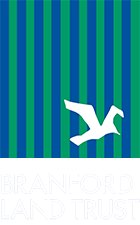
Recommended reading by Laura Noe
Leanne Betasamosake Simpson writes, “strong communities are born out of individuals being their best selves.” As a Canadian indigenous woman, musician, and writer, she shares the wisdom of First Nations. In a world that is profoundly out of balance, indigenous writings remind me that there is a way of thinking, believing, and living that is harmonious and rooted in reciprocity, reverence, and kinship.
For these reasons, I am drawn to these books for inspiration and hope:
Dancing On Our Turtle’s Back — Stories of Nishnaabeg Re-Creation, Resurgence, and a New Emergence by Leanne Betasamosake Simpson.
Fusing science with the sacred and offering a point of view that prioritizes interdependent relationships with nature, I adored Robin Wall Kimmerer’s Braiding Sweetgrass. “How, in our modern world, can we find our way to understand the earth as a gift again, to make our relations with the world sacred again?”
There are no better teachers in nature than trees. The symbol of life, hope, and perseverance, trees are the model for how humans should be living. Peter Wohlleben’s The Hidden Life of Trees and his later book, The Heartbeat of Trees, we learn how trees communicate and collaborate and share resources. They live in community and work together to collectively benefit the forest. Suzanne Simard’s first book, Finding the Mother Tree, she writes of the intuitive interdependence of trees with Mother Trees at the center of the community. Both Wohlleben and Simard combine science and indigenous wisdom when they write about the mycorrhizal fungi. Seen on top of roots and existing below the surface, the fungi are transmitters and communicate the need for water, sugar, and light to trees in what they refer to as the “wood wide web.” The importance of connection in nature offers humans a how-to in living.
Sandra Kynes’ Whispers from the Woods, The Lore and Magic of Trees is divided into two parts. In the first, she writes about working with tree energy and she shares beliefs from a wide range of cultures. “Receiving clear messages from trees is not an everyday occurrence. However, it is important to remain open and aware, as most communication is subtle. We humans tend to be so used to the obvious—we like information to be handed to us in widescreen, Technicolor, surround-sound, action-packed entertainment. The natural world doesn’t work this way, and so we need to slow down, empty our minds of the useless junk, and listen.” In the second half of her spiritually crafted book, she identifies 50 tree species and offers histories and healing attributes.
Indigenous wisdom offers us an understanding that we are all connected-humans, plants, and animals, and living harmoniously benefits all. When we all are being our best selves, we all thrive. These readings have helped me understand the interrelatedness of all species and to know that forests are a public health solution.



